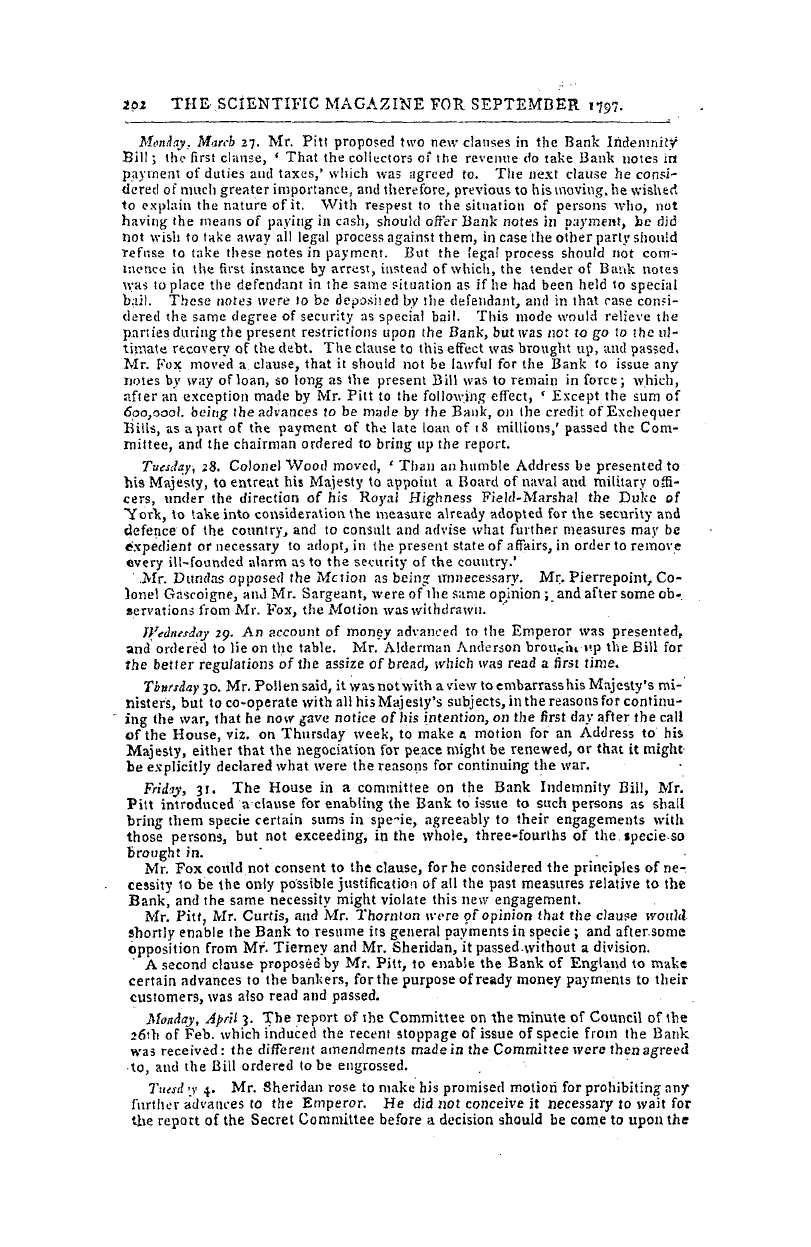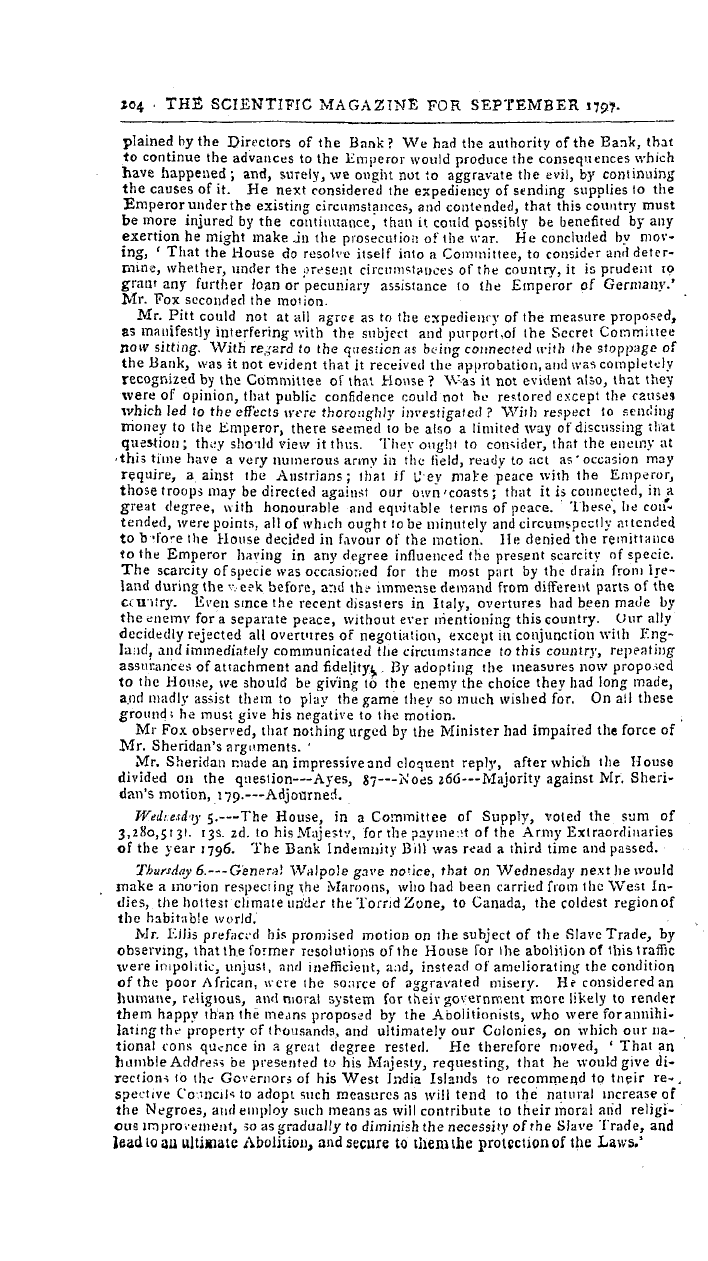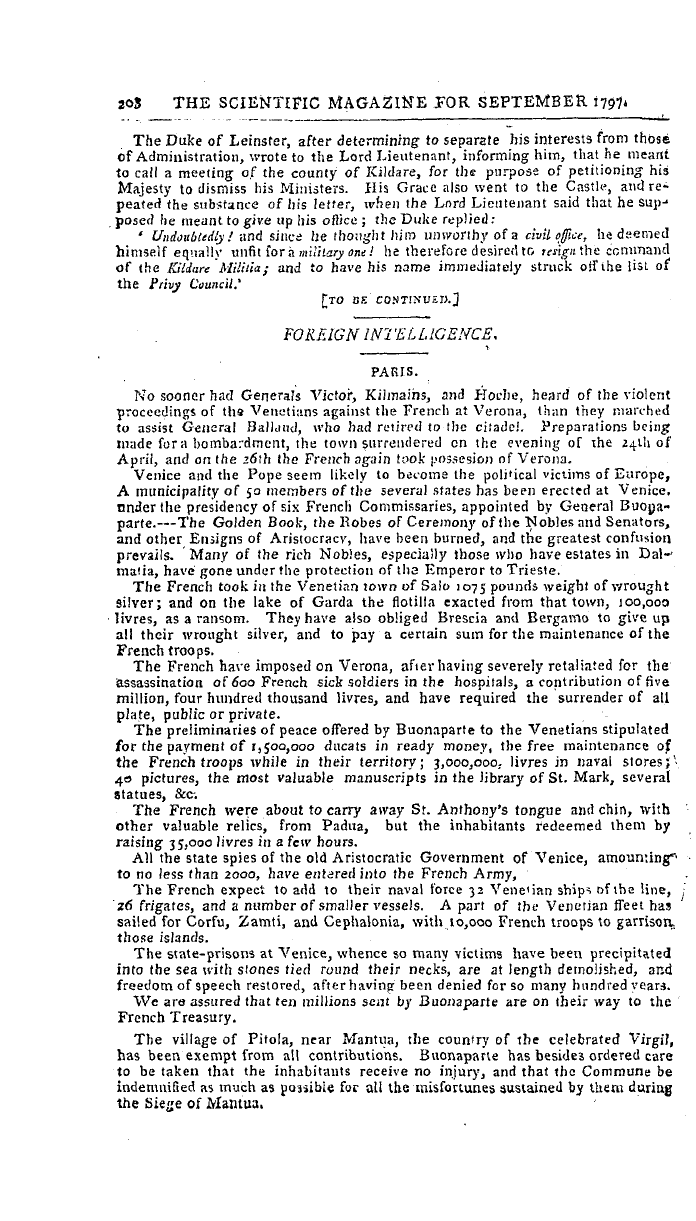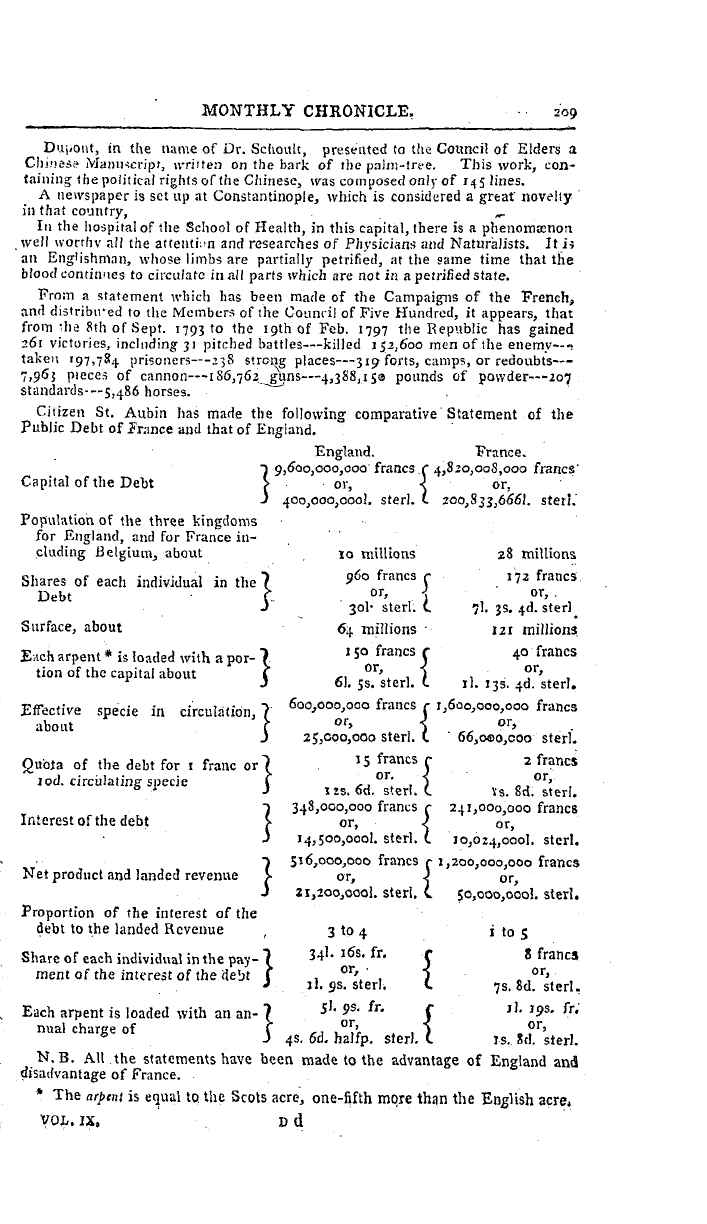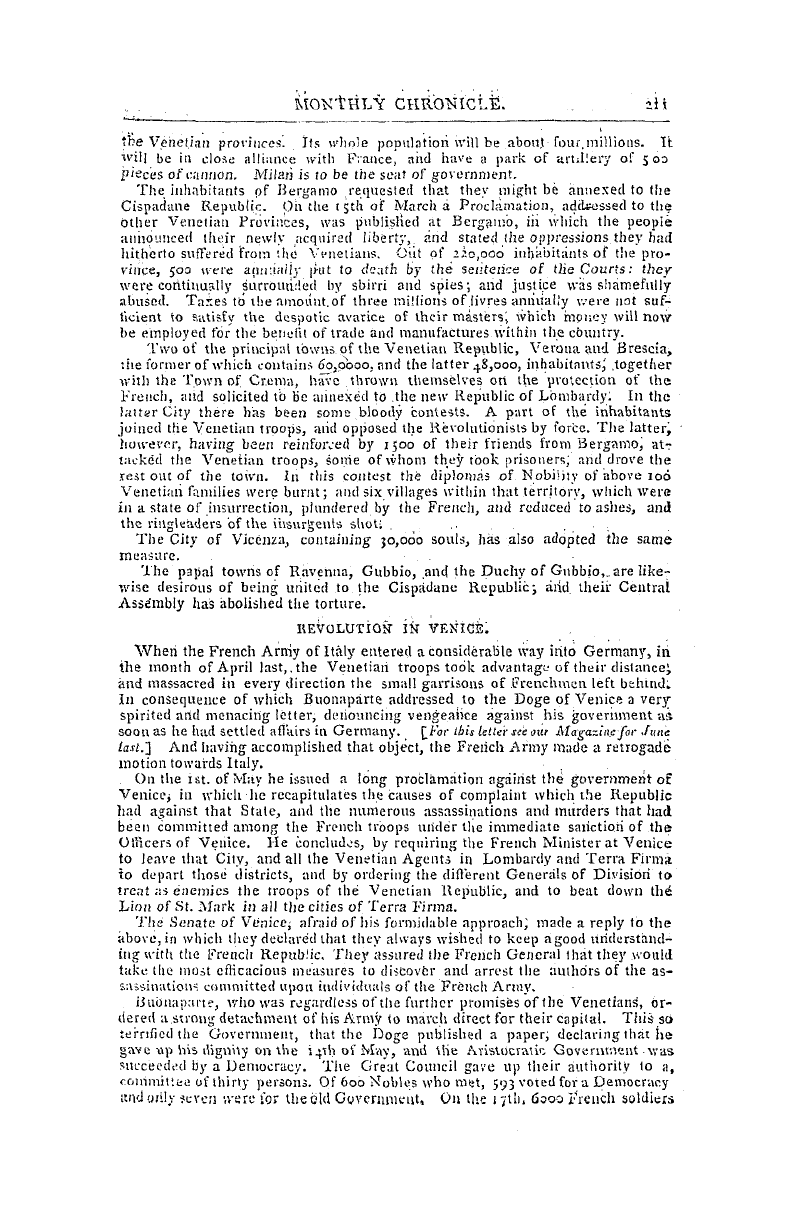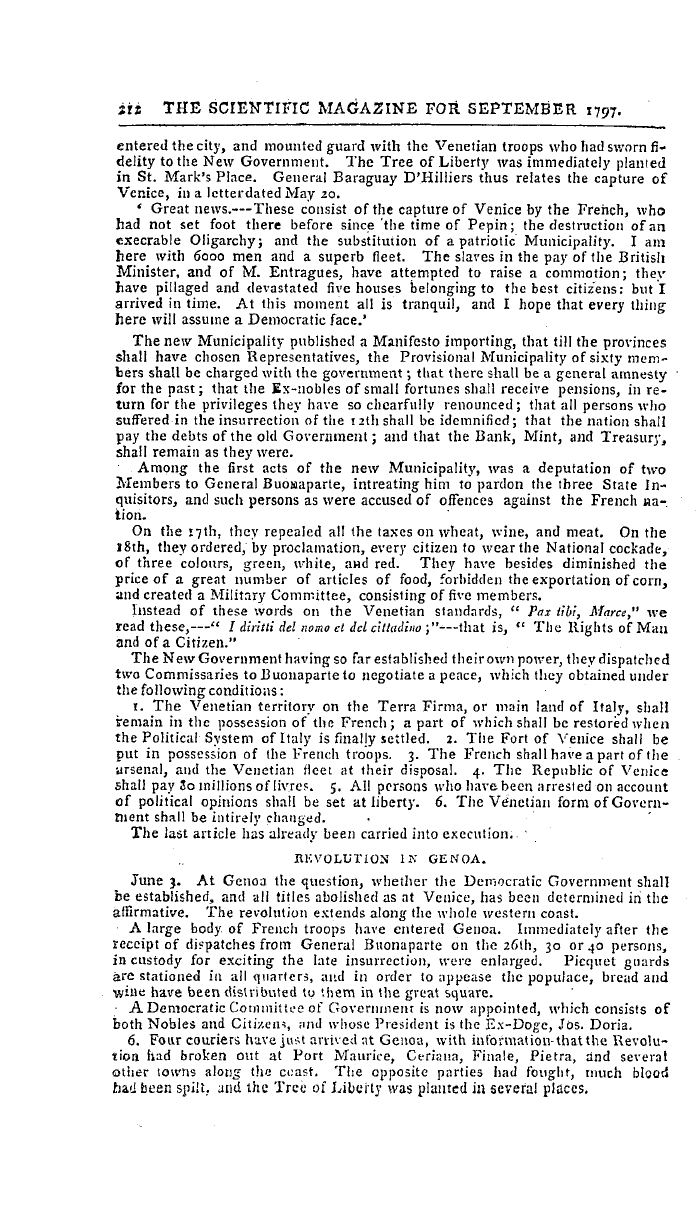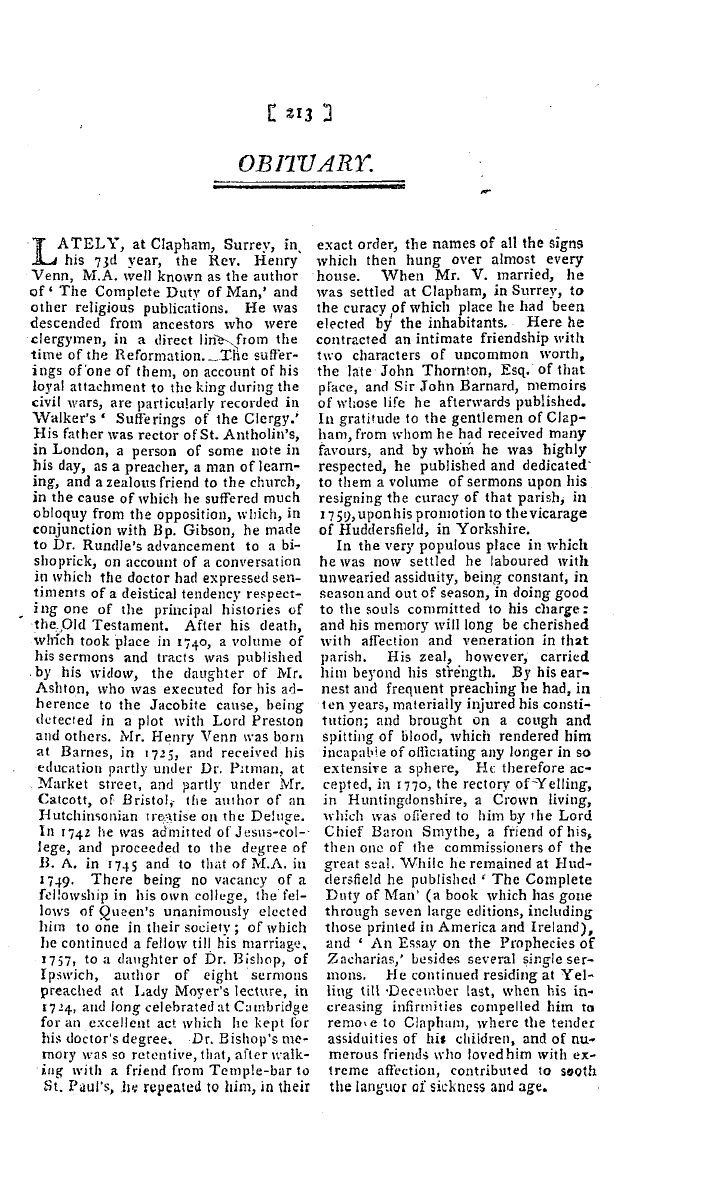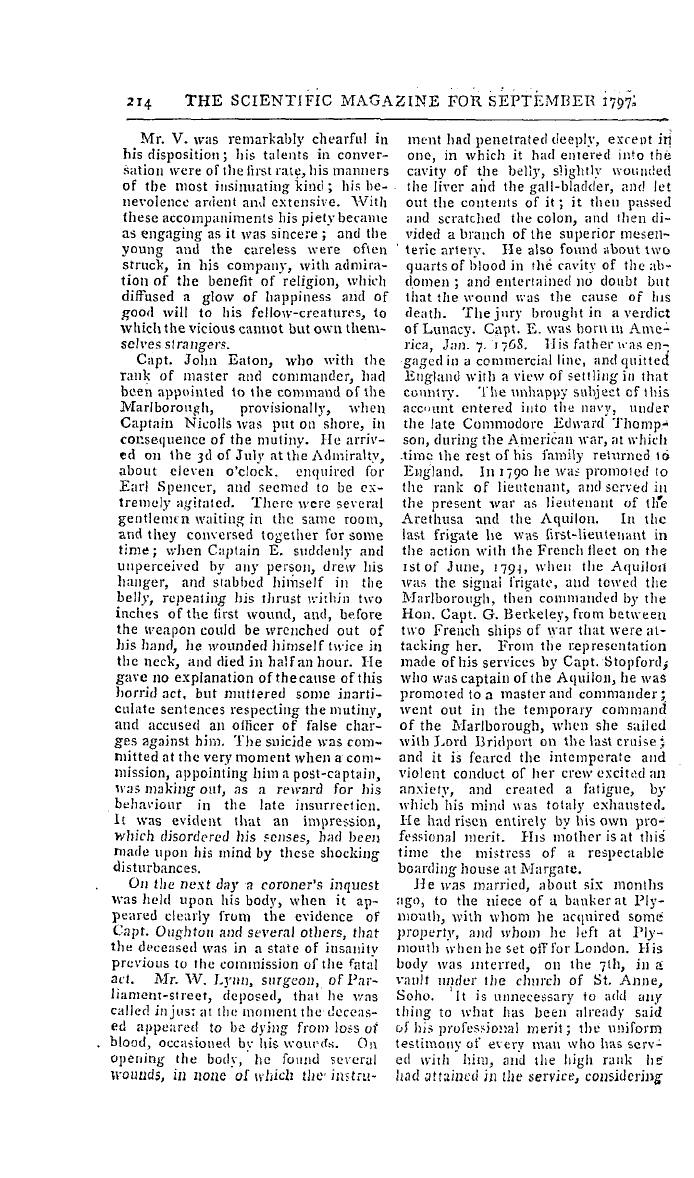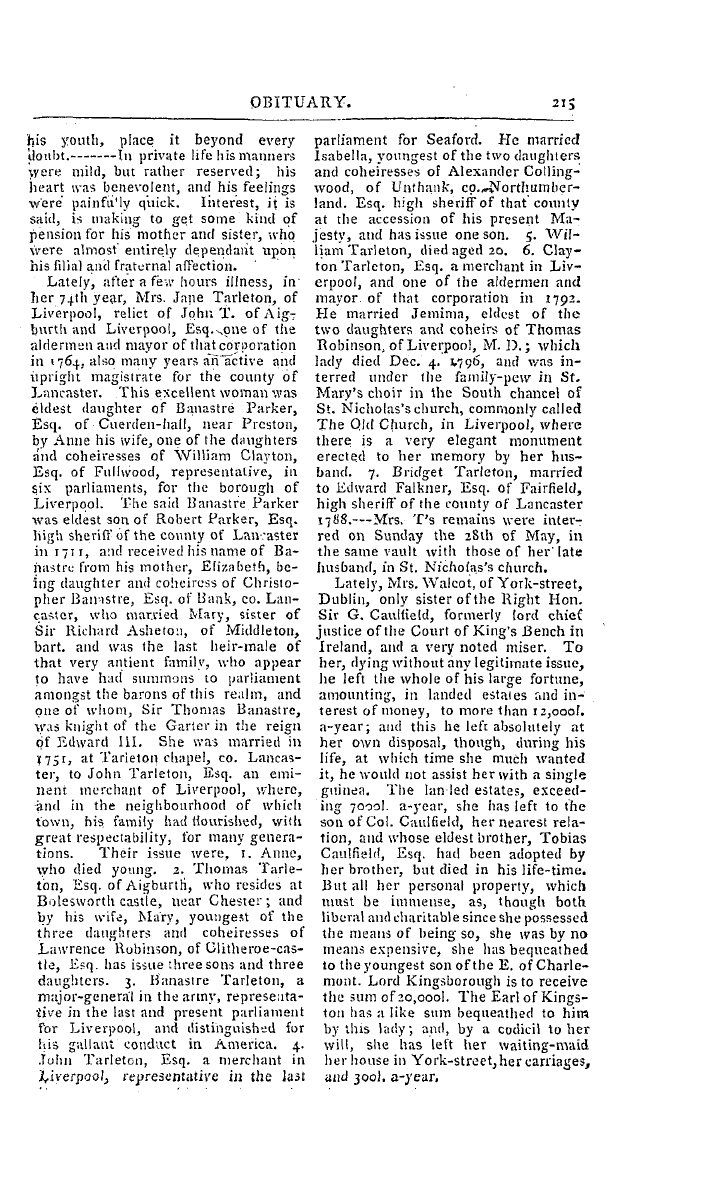-
Articles/Ads
Article HISTORY OF THE SCIENCES FOR 1797. ← Page 2 of 4 →
Note: This text has been automatically extracted via Optical Character Recognition (OCR) software.
History Of The Sciences For 1797.
not seen ; but the southern side was most luminous . A star or two were seen through the haze of the comet , which was less " conspicuous than when first discovered . On the 20 th , at nine , it was still visible ; but the sky being cloudy , its place could not be well ascertained . The rate of its progress to the ecliptic was sensibly diminished . At a quarter before tenhow- ,
, ever , it became distinctly visible to the naked eye , being beyond the bright star Lyra , and having advanced about six degrees toward the ecliptic since the preceding night ' s observation ; and was at ten by A in the left ' hand of Hercules . It had then advanced 23 ] degrees south from its first appearance . On the 25 th it was just visible with a good achromatic , from a ,
quarter before nine , above the star Opiucbus , which had then 5 minu . es 'altitude , and the comet 50 deg . 5 min . It had 73 degrees polar distance , and had advanced since Monday nig ht about 10 degrees : its mean rate about 2 deg . 30 min . and its apparent motion on the 15 th had been above 19 cleg . When last observed , which was on the 25 th , though hardly
discernible , its bright ascension was 260 , with a distance of about ' 39 degrees from the ecliptic . And it appeared to be either stationary or retrogade , as is observed of comets on their aphelion . Mr . Capel Loift , who paid , perhaps , the most attention to this appearance , communicated to one of the newspapers the following letter :
FROSTON , Sept . 3 , 1797 , ' I ought to mention , perhaps , that since I hazarded some conjectures , which you have inserted , relative to the comet which has lately appeared , a letter has been communicated to me , written by a gentleman of acknowledged eminence in the theory of comets , whom 1 do not think myself authorised to name . ' By that letter my conjectures have been strengthened in part , in
that in passing near its node it came very near to the earth indeed ; and that when first seen it was returning from the sun , having passed its perihelion some weeks . Its place too of perihelion is not estimated very greatly different ; but its ascending node is calculated in the sign 28 deg . of Aquarius , and its perihelion distance computed at near six tenths of the earth ' s , consequently nearer to the sun than
Venus ; and its magnitude is calculated to have been small . 1 owe more deference to this judgment than I can allow partially to my own guesses . 1 have only to add , that though some of the London journalists amuse themselves with laughing at its appearance , and calling it the crop comet , wiser laws than those of fashion govern the universe . Comets can only be seen with a great train when a
spectator from the earth views them obliquely , for their train is turned nearly opposite from the sun . When seen under a small difference of angle from the line which would pass through the place of observation the sun and the comet , lliey can only be given with a very short train , or a hazy coma round them ,
Note: This text has been automatically extracted via Optical Character Recognition (OCR) software.
History Of The Sciences For 1797.
not seen ; but the southern side was most luminous . A star or two were seen through the haze of the comet , which was less " conspicuous than when first discovered . On the 20 th , at nine , it was still visible ; but the sky being cloudy , its place could not be well ascertained . The rate of its progress to the ecliptic was sensibly diminished . At a quarter before tenhow- ,
, ever , it became distinctly visible to the naked eye , being beyond the bright star Lyra , and having advanced about six degrees toward the ecliptic since the preceding night ' s observation ; and was at ten by A in the left ' hand of Hercules . It had then advanced 23 ] degrees south from its first appearance . On the 25 th it was just visible with a good achromatic , from a ,
quarter before nine , above the star Opiucbus , which had then 5 minu . es 'altitude , and the comet 50 deg . 5 min . It had 73 degrees polar distance , and had advanced since Monday nig ht about 10 degrees : its mean rate about 2 deg . 30 min . and its apparent motion on the 15 th had been above 19 cleg . When last observed , which was on the 25 th , though hardly
discernible , its bright ascension was 260 , with a distance of about ' 39 degrees from the ecliptic . And it appeared to be either stationary or retrogade , as is observed of comets on their aphelion . Mr . Capel Loift , who paid , perhaps , the most attention to this appearance , communicated to one of the newspapers the following letter :
FROSTON , Sept . 3 , 1797 , ' I ought to mention , perhaps , that since I hazarded some conjectures , which you have inserted , relative to the comet which has lately appeared , a letter has been communicated to me , written by a gentleman of acknowledged eminence in the theory of comets , whom 1 do not think myself authorised to name . ' By that letter my conjectures have been strengthened in part , in
that in passing near its node it came very near to the earth indeed ; and that when first seen it was returning from the sun , having passed its perihelion some weeks . Its place too of perihelion is not estimated very greatly different ; but its ascending node is calculated in the sign 28 deg . of Aquarius , and its perihelion distance computed at near six tenths of the earth ' s , consequently nearer to the sun than
Venus ; and its magnitude is calculated to have been small . 1 owe more deference to this judgment than I can allow partially to my own guesses . 1 have only to add , that though some of the London journalists amuse themselves with laughing at its appearance , and calling it the crop comet , wiser laws than those of fashion govern the universe . Comets can only be seen with a great train when a
spectator from the earth views them obliquely , for their train is turned nearly opposite from the sun . When seen under a small difference of angle from the line which would pass through the place of observation the sun and the comet , lliey can only be given with a very short train , or a hazy coma round them ,


























































